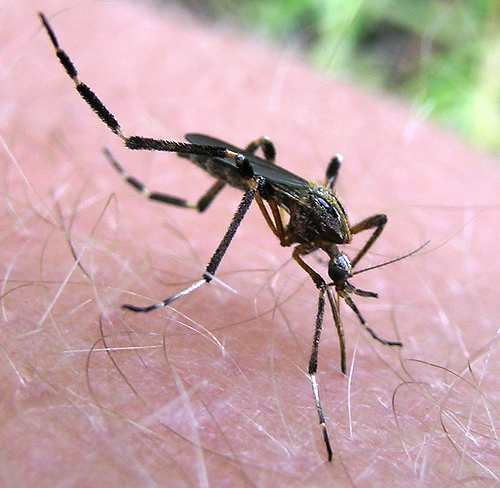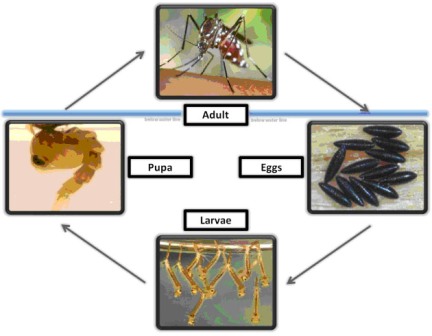Mosquitoes
MOSQUITOES IN PRINCE WILLIAM COUNTY
There are about 3,500 species of mosquitos found throughout the world. About 30 species have been identified in this County. Mosquitoes are annoying and can carry disease. Prince William County Mosquito and Forest Pest Management staff monitor, larvicide and spray to help control mosquitoes in our community.
YOU ARE THE BEST FIRST DEFENSE AGAINST MOSQUITOES
While most people know mosquitoes inhabit predominantly wet environments such as stormwater ponds, stream beds, and stormwater runoff areas, many residents and businesses owners in the community may not know mosquitoes can inhabit areas on their own property. Standing water on property contributes to a large number of mosquito infestations in Prince William County.
Infestation can occur from the smallest accumulation of standing water, such as water that builds in a flowerpot tray, gutters, a child's toy truck and anywhere water can gather. Help prevent mosquito infestations in the county by reviewing the information below and identifying and eliminating standing water by tipping, tossing and removing standing water where ever it lies.
Here are some tips to protect you, your family and pets:
- All mosquitos must have water to reproduce, so the best way to eliminate them is to tip and toss standing water around your property at least once a week. Search for standing water in drain pipes, flower pot rims, tarps, tires, children's toys, gutters, and any other objects that can hold even the smallest amounts of water.
- Cover the end of plastic tubes used to carry water away from the downspouts. A piece of screen secured with a rubber band will work well.
- The Asian tiger mosquito is a day-time biter. It is our number one nuisance mosquito and a potential carrier of Zika virus. Asian tiger mosquitoes closely associate with humans and prefer to reproduce in artificial containers. Asian tiger mosquitoes only need about a tablespoon of water to complete their lifecycle! So be sure to even look for plastic bottle caps that may be holding water.
- Be sure to wear protective clothing when you are outside.
HOW MOSQUITOES FEED
 Mosquitoes have mouthparts that are adapted for piercing the skin of plants and animals. While males typically feed on nectar and plant juices, the female needs to obtain nutrients from a "blood meal" before she can produce eggs.
Mosquitoes have mouthparts that are adapted for piercing the skin of plants and animals. While males typically feed on nectar and plant juices, the female needs to obtain nutrients from a "blood meal" before she can produce eggs.
Adult females lay their eggs in standing water, which can be a salt-marsh, a lake, a puddle, a natural reservoir on a plant, or an artificial water container such as a plastic bucket.
The first three stages are aquatic and last 5–14 days, depending on the species and the ambient temperature; eggs hatch to become larvae, then pupae. The adult mosquito emerges from the pupa as it floats at the water surface. Adults live for 4–8 weeks.
In some species of mosquito, the females feed on humans, and are therefore carriers for a number of infectious diseases. For information on the Zika virus, click here to visit the Center for Disease Control (CDC) website.
LIFE CYCLE OF THE MOSQUITO
The Mosquito is a common insect in the family Culicidae (from the Latin culex meaning midge or gnat). All mosquitoes pass through four life stages: egg, larva, pupa and adult. The first three stages must have water for development.
